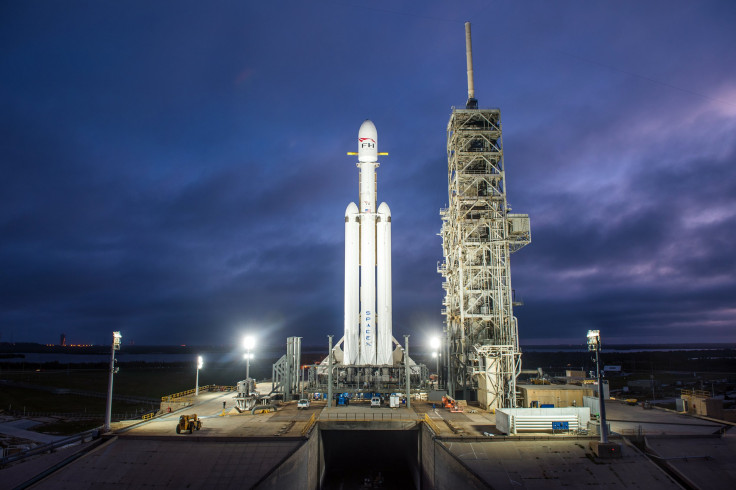Elon Musk Confirms SpaceX Falcon Heavy Launch Schedule, Shares Mars Tourism Concepts

After delays of a few years, the Falcon Heavy rocket looks set to finally have its day in the sun. SpaceX CEO Elon Musk confirmed Sunday night the much- and often-delayed maiden launch of the rocket was still on schedule for Tuesday, like he had announced a week earlier.
Falcon Heavy remains go for launch at 1:30pm on Tuesday
— Elon Musk (@elonmusk) February 5, 2018
He was referring to Florida time, which is the same as the rest of the East Coast.
Falcon Heavy, if its launch is successful, would be the world’s most powerful rocket in operation. Only two rockets in history — NASA’s Saturn V and the Soviet-era Russian-built Energia — were more powerful than the SpaceX rocket. And that is part of the reason why the Falcon Heavy is a good candidate for making a successful trip to neighboring Mars.
Musk has been talking about colonizing the red planet for years now, and Mars is where the controls of Falcon Heavy are set for. On its test flight, the only payload the rocket would carry is Musk’s own cherry-red Tesla Roadster, which would, rather appropriately, be playing the late David Bowie’s “Space Oddity.” (Even though Musk has said the song would play in orbit around Mars, it is unclear how the car’s music system would stay powered for the entire duration of the trip.)
Shortly before he confirmed the Tuesday afternoon launch, Musk also shared some concept art on his Instagram page showing tourism on Mars, with faux posters — done retro-style — showing famous and picturesque spots on the red planet.
The first poster shows a futuristic cable car, and also a lone mountaineer, climbing up Olympus Mons. The caption “The solar system’s highest peak” is not entirely accurate, since the volcanic mountain is actually the highest peak on any planet in the solar system, but the highest peak is actually on an asteroid called Vesta. But with a height of 21.9 kilometers, it comes pretty close to the 22 kilometers of Vesta’s Rheasilvia.
The second poster shows what seems to be a view from Phobos, the larger of the two Martian moons, with the tourists looking out at the red planet in the foreground and the second moon, Deimos, in the background on the upper right, jutting out like a white limb. In real life, Deimos, which is much farther away from Mars than Phobos is, and is also smaller in size, would appear much smaller.
It is the Martian version of the Grand Canyon that appears in the third poster. Valles Marineris was perhaps made by flowing lava in the planet’s history, but its 4,000 kilometers make it the longest formation of its kind on a non-Earth planet (Venus also has similar-sized chasms, perhaps rift valleys like on Earth).
Musk also shared another photograph on Instagram, of a “driver” seated behind the wheel of the Roadster, which is already in the nose of the Falcon Heavy.
© Copyright IBTimes 2024. All rights reserved.




















